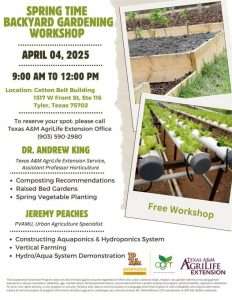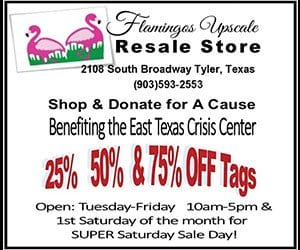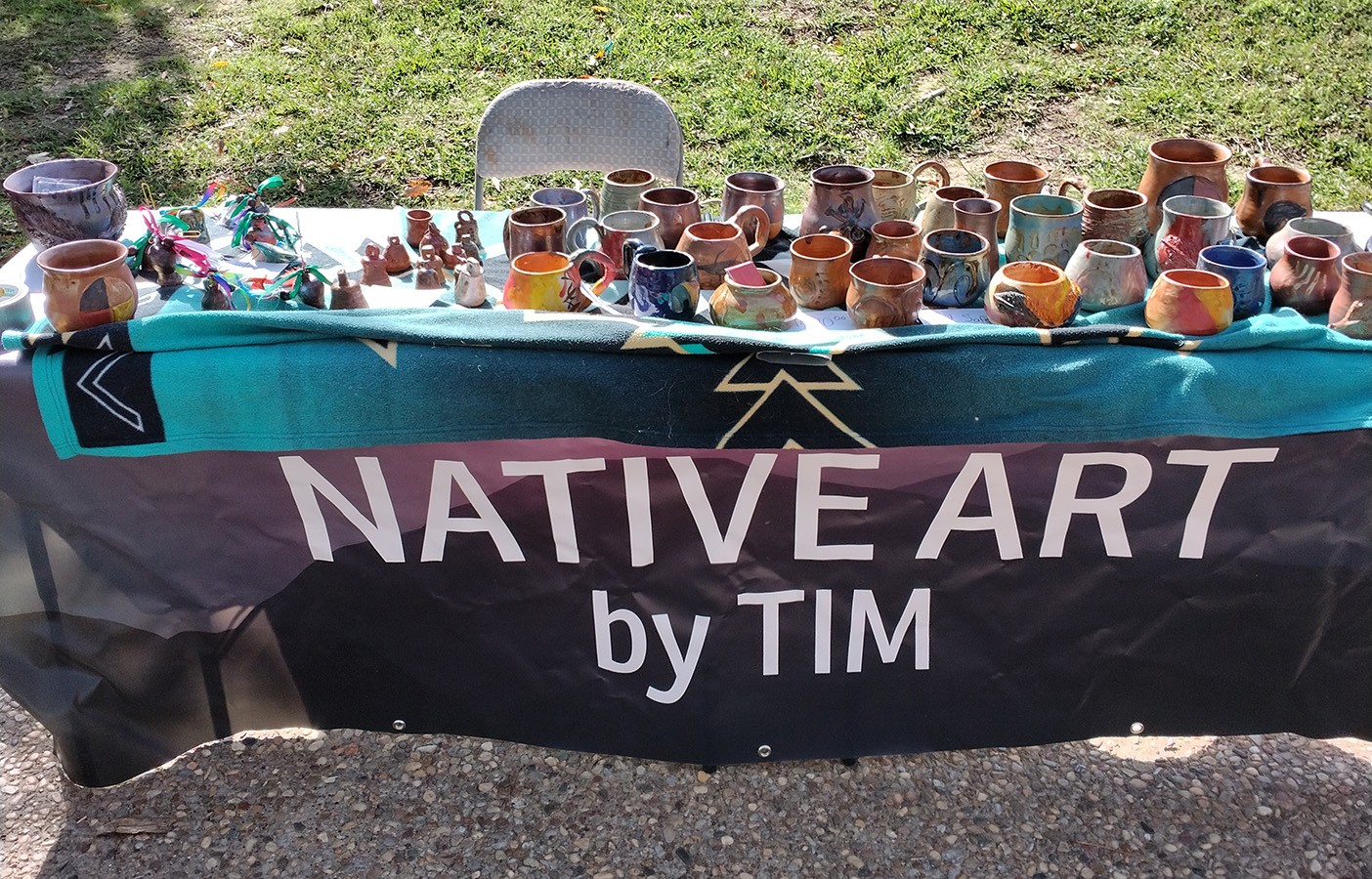
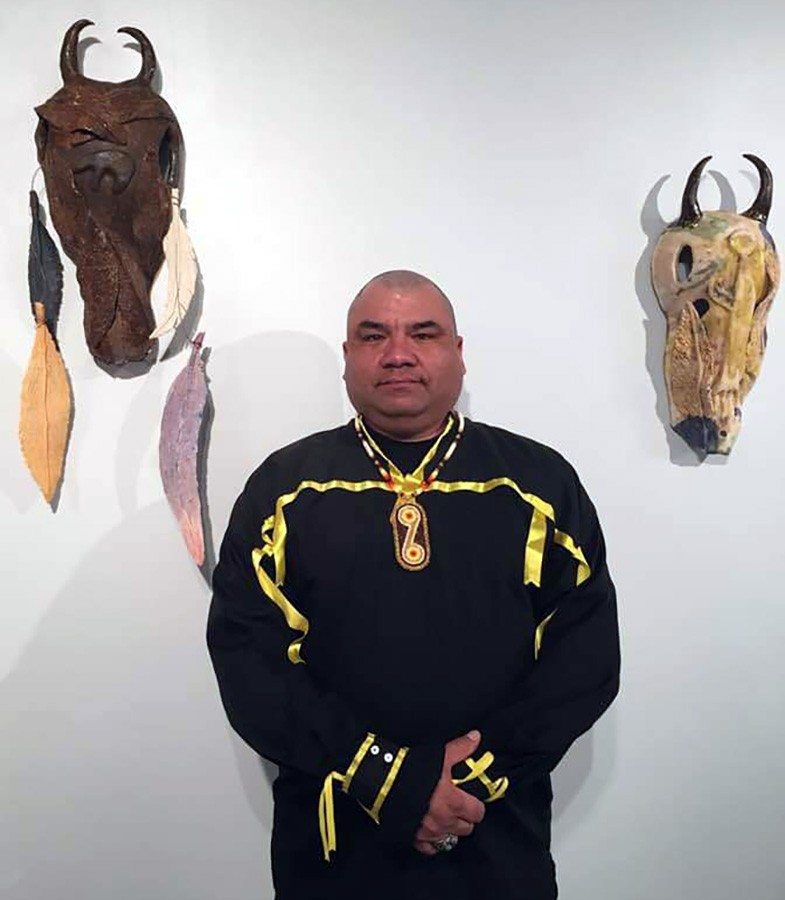
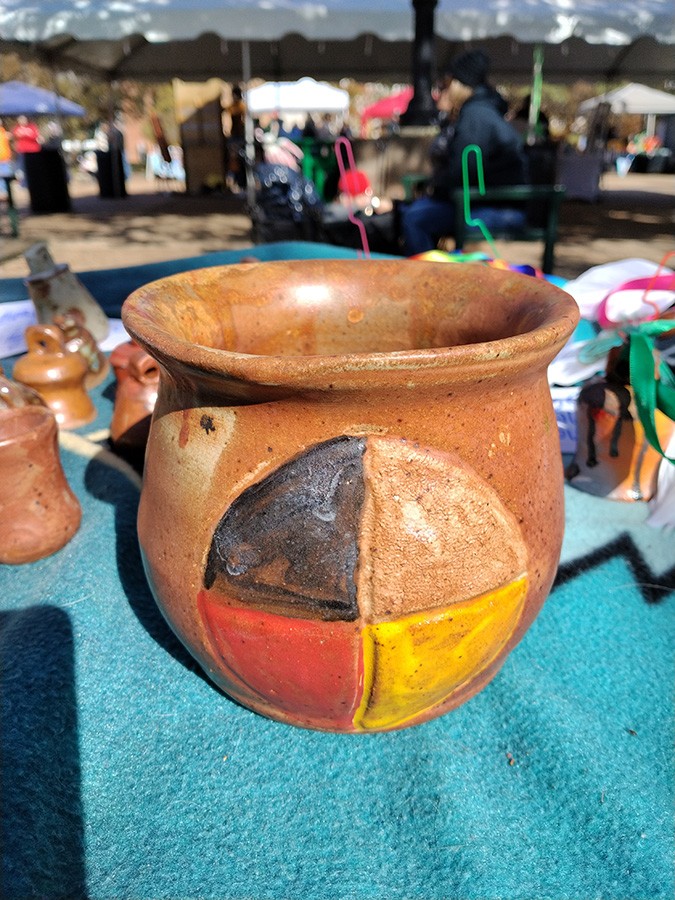
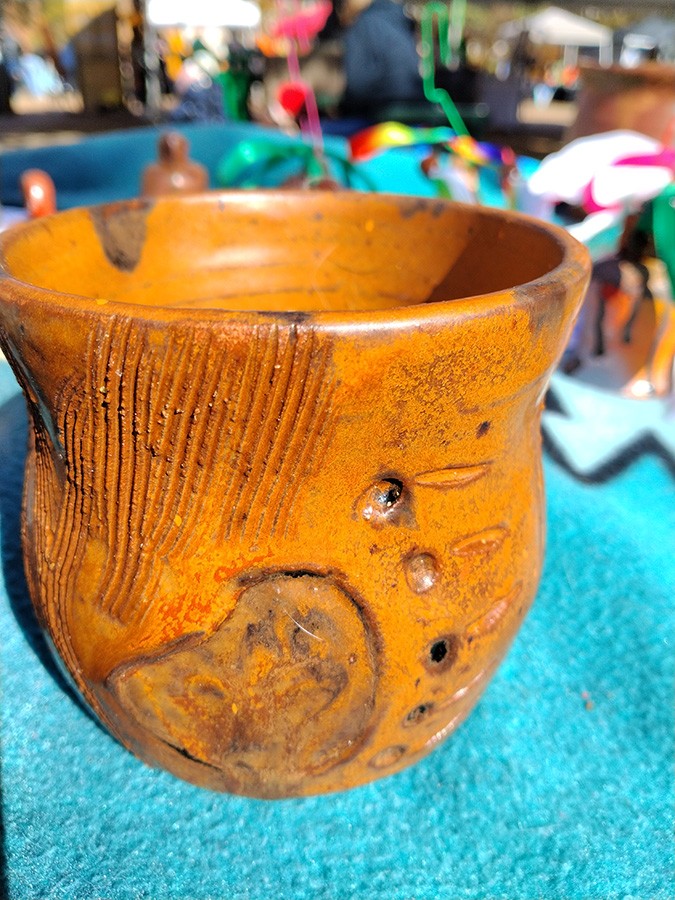
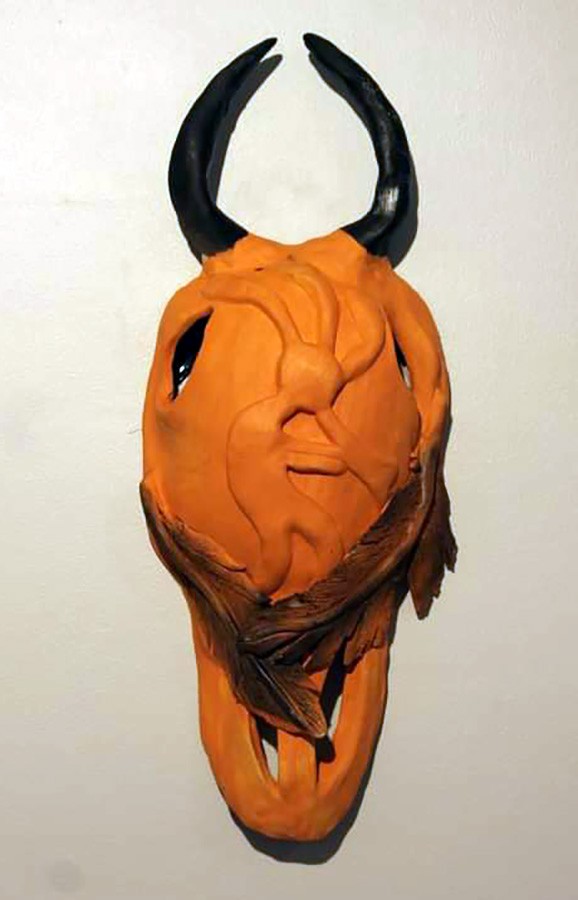
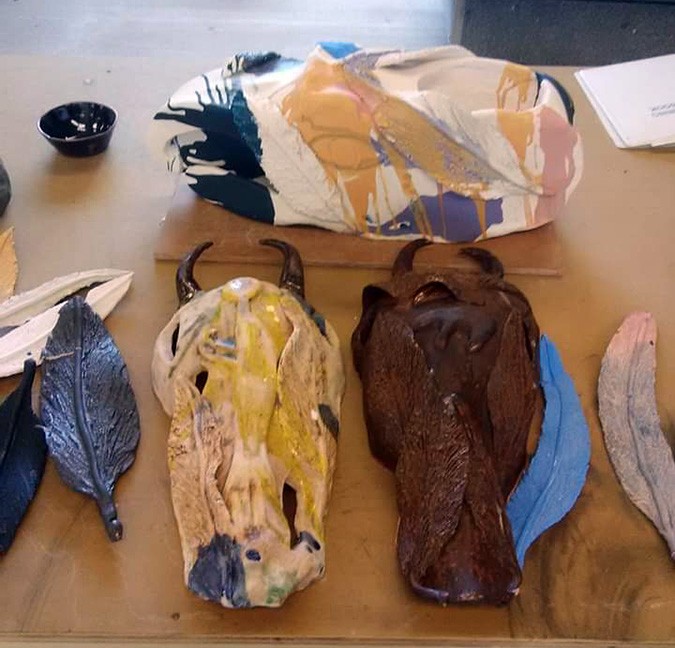
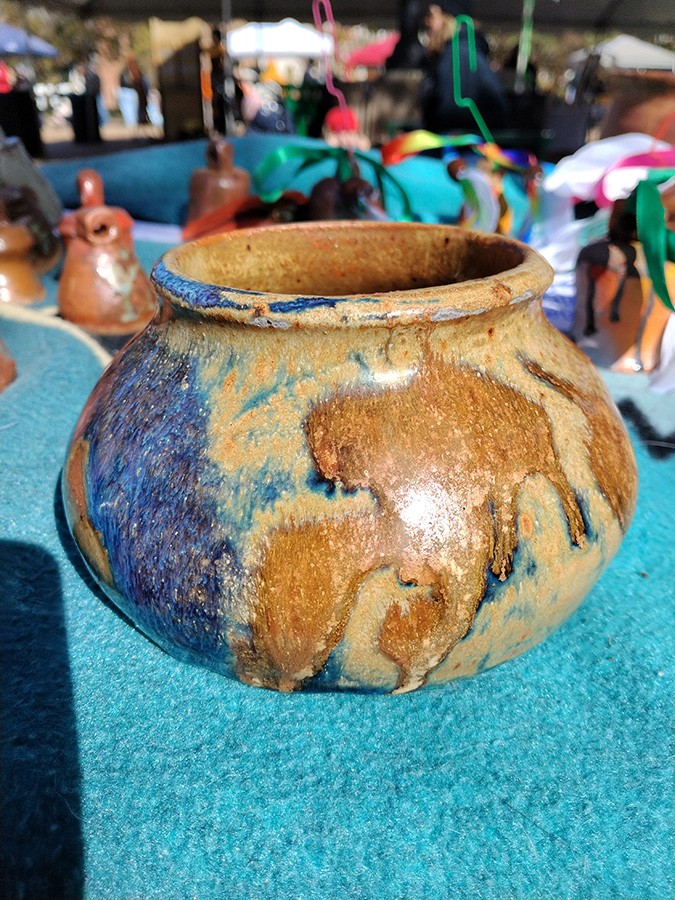
Some People Do: Tim Benson
By Derrick White
“A long stretch of highway reaches out across the plains. Open fields of sagebrush scattered wild along the range. It’s not the place to break down, just keep driving through. But why would you live here? Some people do.” – Ned LeDoux. About three hours north of Tyler up Highway 69 to Interstate 75, the Bryan County, Oklahoma town of Durant (or Dew-Rant for locals) happens to be the place I spent my last night as a single man back in the early nineties. Still, the reason I mention it here is that it serves as the headquarters of the Choctaw Nation of Oklahoma. One local East Texas artist and Choctaw native is Tim Benson. “I like sharing native history. So, if someone buys a cup from me, they may also get a story or a history lesson,” explains Benson. Tim Benson attended and studied art at both Tyler Junior College and the University of Texas at Tyler. He creates ceramic, utilitarian pieces. Tim states, “Currently, I am making useful items. Planters you can use to grow your pepper plants, coffee cups you can start your day with, unique bowls for a warm, hearty soup, or maybe food and water bowls for your pets.”
Tim Benson is working on the renewal of a long custom. The website www.choctawnation.com informs, “Lukfi Nia, the Choctaw word for clay, literally means “fat dirt.” Choctaw pottery is made of native clay dug by hand. Native clays come in many colors, but the most important factors are a clay’s workability and the ability to fire properly in the traditional firing process. Clay is dug and cleaned of debris before the construction process begins. Pure clays will often crack during drying or firing. Ancient people learned mixing certain types of small, hard particles called “temper” can help prevent cracks. Mussel shell was the main type of temper used by Choctaw ancestors. The shells would be burned and pulverized into particles to be mixed with the clay. Once the clay is prepared, the artist begins to build the form using a combination of molding, coiling and paddling. Some types of Choctaw pottery are buffed with leather, burnished with a smooth stone, and decorated with incised or engraved designs. Firing is done by slowly and evenly heating the dried pottery vessels in a well-controlled bonfire. Traditional Choctaw pottery comes in two basic types. Shuti are vessels used for cooking. Large pieces of temper help protect these vessels from the thermal stresses of repeated heating and cooling during use. Ampo are vessels used for serving food. They incorporate fine particles of temper, allowing them to be polished and intricately decorated. Choctaw pottery is intended to be functional.”
The site continues, “Like any art form, the design and symbolism of Choctaw pottery are subjective. Each generation brings new ideas and interpretations to classic designs. Using traditional motifs today creates a unique and special link to the ingenuity and creativity of Choctaws of the past. Our ancestors brought many of these designs to Oklahoma during the time of removal, and they are still in use today. For 3,500 years, well over 100 generations of Choctaw ancestors made and perfected this art form. It was carried on the Trail of Tears to Oklahoma. Over the next century, it was marginalized through the colonization process but never went to sleep completely. In 2009, the Choctaw Nation began to work to revitalize time-honored Choctaw ceramic processes by hosting classes and other events in the community. Today, this art form is stronger than it has been in 150 years. Hundreds of living tribal members are making customary Choctaw pottery.”
Benson is one of these tribal makers carrying on the long custom. He describes, “The established practice is to have the clay hand dug and coiled (using small ‘ropes’ of clay added one on top of the other to build up bowls and other items) and then pit fired. This is a significant investment of time, and breakage can be a loss of several days’ worth of work. I use a modern pottery wheel, making my work less expensive, and anyone can afford it. The clay and glazes I use are professional grades. The pieces get fired in a professional kiln at Adjusting Sails Dirtworks (2461 Mosaic Way, near True Vine Brewing Company on Earl Campbell Parkway). It is important as I go to great lengths to ensure all my pieces are food safe. I differ from other native potters. There are others making pottery in the old way. You can start your day with coffee from a cup I created, and hopefully, we have had time to talk, and you have gained a greater appreciation of these long-held processes and the land you walk on daily.”
Tim first became interested in creating through, you guessed it, gourds. He remembers, “Many years ago, I worked in construction and learned to use various tools. With my new knowledge of construction techniques, I began to make birdhouses out of gourds. I also met the farmers growing the gourds. I started growing my own. It kind of took on a life of its own. The important thing my art has brought to my life is my spiritual connection to the past and not just my native past, although it is important to me. Almost every culture of the earth has some form of ceramic history.”
There are frustrations with a creative life. Benson confesses, “Finding time can be difficult. I have a full-time job outside of making art. I wanted to include this fact to encourage others to pursue art part-time. You can do it.” Tim Benson gets inspired by artists like Jeraldine (Jeri) Redcorn (an Oklahoma artist credited with reviving Caddo pottery). “She is a Caddo potter making established pottery. You can see her work at the Caddo Mounds Museum outside Alto, TX. Since I mentioned Caddo Mounds, I should mention the Chief Bowles site outside Ben Wheeler. You can enjoy nature when you visit this site on the Neches River. Historically known as The Battle of the Neches.”
As the modern world plunges headfirst into the technology-driven abyss, it is essential to look backward and ensure our lineage to the past is not broken. I am thankful some people do.











